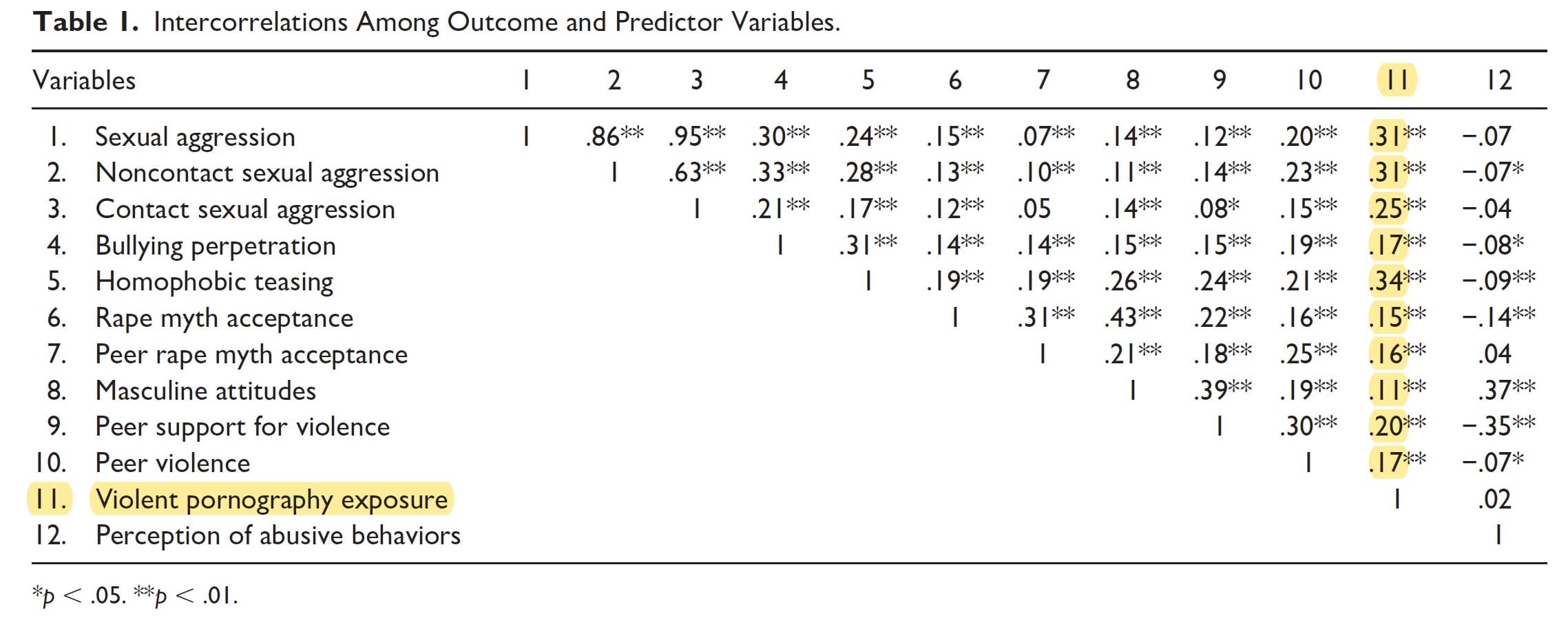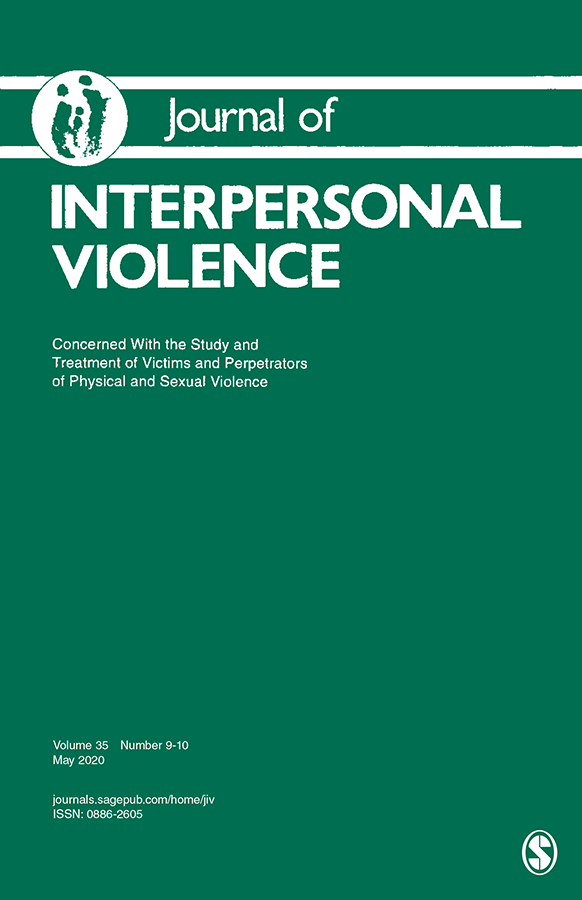Study on 10th grade males reports numerous negative outcomes related to violent porn use:

————————————–
Huntington, Charlie, Deborah N. Pearlman, and Lindsay Orchowski.
Journal of Interpersonal Violence (2020): 0886260520915550.
https://doi.org/10.1177/0886260520915550
Abstract
The Confluence Model of Sexual Aggression is a well-established framework for understanding factors that contribute to men’s perpetration of sexual aggression against women, highlighting the roles of hostile masculinity, impersonal sex orientation, and exposure to pornography. To date, only one study has applied aspects of the Confluence Model to examine predictors of sexual aggression in adolescent males, and the study did not include pornography exposure as a predictor. The current study evaluates the Confluence Model as a framework for understanding the perpetration of both contact and noncontact sexual aggression in a sample of 935 heterosexual 10th-grade adolescent boys. Composite scores for hostile masculinity and impersonal sex orientation were generated. Nearly all the variables included in the hostile masculinity and impersonal sex constructs were associated with perpetration. Zero-inflated Poisson regression models revealed distinct combinations of salient predictors when the dependent variable was identified as boys’ frequency of perpetration, compared with when the dependent variable was defined as any perpetration of sexual aggression. Impersonal sex orientation and violent pornography exposure were associated with perpetrating noncontact sexual aggression in the last 6 months, while violent pornography exposure and the interaction of hostile masculinity and impersonal sex orientation increased the frequency of recent contact sexual aggression. Results suggest that hostile masculinity, impersonal sex orientation, and violent pornography exposure are important factors to address within sexual assault prevention approaches for adolescent boys.
